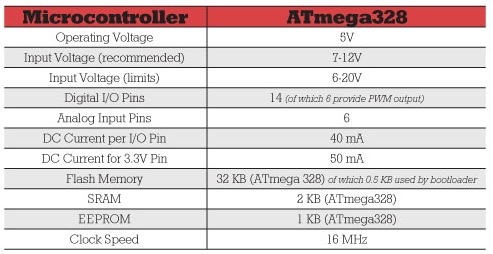This is how the official Arduino site describes it Arduino is an open-source electronics prototyping platform based on flexible, easy-to-use hardware and software. It’s intended for artists, designers, hobbyists, and anyone interested in creating interactive objects or environments.
Arduino History
Once upon a time—well in 2005 in Irvea, Italy—Massimo Banzi, David Cuartielles and Gianluca Martino started what’s know today as ”Arduino.” Insiders believe that the name comes from a pub close to the birthplace of the project, which in turn was named after Arduin of Ivrea, the main historical character of the town. ”Arduino” is an Italian masculine first name, meaning ”strong friend.” The English version of the name is ”Hardwin.” The vision of Massimo and David was to develop a device less expensive than other prototyping systems available at the time which would enable students to develop electronics in multidisciplinary projects.
Arduino is a simple system designed for creative people with little or ”no prior knowledge of electronics,” says Banzi. ”It’s cheap and open-source with lots of documentation written in a not-too-technical language. Above all, it has a very welcoming attitude towards beginners and tries not to scare them too much.”
The ”rather unconventional” approach to make both hardware and software open-source was taken. I’ll talk more about this later on. It was a big risk, and although it was initially uncertain whether the production costs for the first boards, let alone the time spent for the software, could be covered—as history shows—all went well as by October 2008; about 50,000 Arduino boards had been shipped and by February 2010 more than 120,000.
Just check the hardware specs of the Arduino UNO above. A board with a 16 MHz 8-bitAVR sold on planet Earth in 2011? Are these guys serious?
Back in 1996 when the AVR (which is short for Alf (Egil Bogen) and Vegard (Wollan)’s Risc processor) was conceived by those two students at the Norwegian Institute of Technology in Trondheim, Norway, it was a pretty cool device: on chip flash, modified Harward architecture, one cycle per instruction (in most of the cases), in-system programmable, on-chip debugging [4]. Working with it back then you would pretty soon realize that it was much less of a pain to write C programs for it than for an 8051 or aPIC, which was what I had lying around in my lab at that point in time.
Nowadays, unless really low power consumption is required, a big leap forward toward 32-bit ARM processors can be observed and the Arduino UNO does not look like anything close to a state-of-the-art embedded hardware platform. In the same price range you could get ARM Cortex-M3 boards and even MIPS boards running Linux. So why should we professionals even bother looking into this outdated hobbyist technology?
Article By: EEWeb


